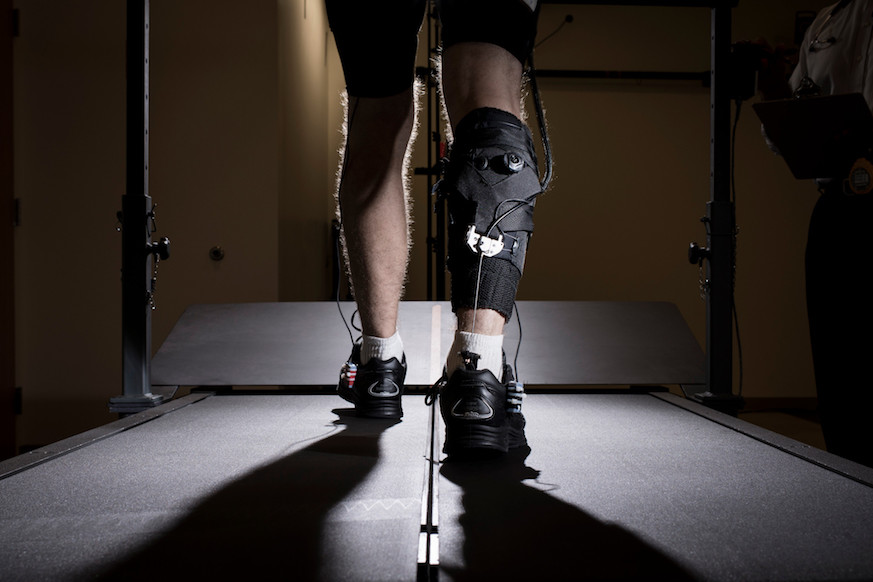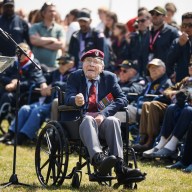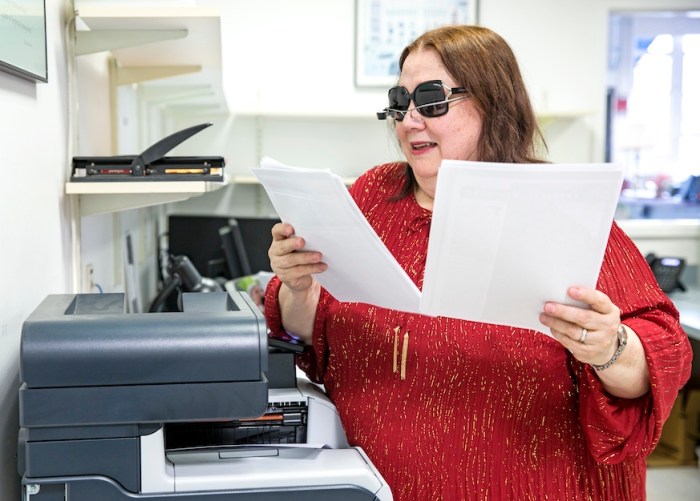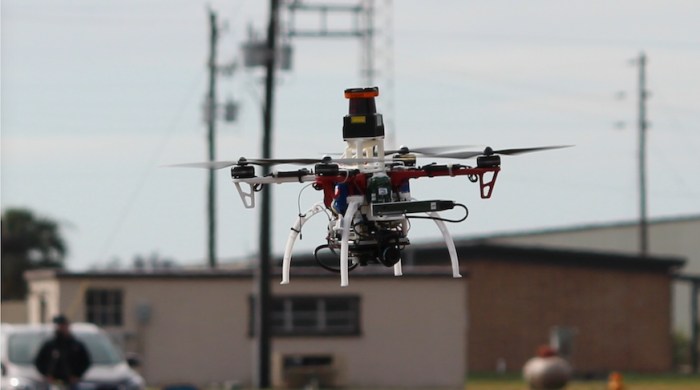Stroke patients may soon be able to wear a robotic suit that can help them walk without a limp.
Researchers at Boston University’s College of Health & Rehabilitation Sciences and the Harvard School of Engineering worked together to develop a wearable “soft” robotic suit, also called an exosuit, that can help with post-stroke recovery.
About 85 percent of people who have had a stroke regain the ability to walk, said Terry Ellis, director of the Center for Neurorehabilitation at BU. But the majority of those people have impaired walking, she added, and the treatment options for a post-stroke patient are limited.
Currently, patients are given a walker, cane or plastic brace that fits on the leg and prevents them from tripping over their own feet. Lou Awad, a faculty member at Harvard’s Wyss Institute and at BU, said that those mobility aids are practically “from prehistoric times.”
They’re also problematic, Ellis added, because these options hinder the patient’s ability to recover, since they aren’t strengthening the muscles necessary to develop a normal gait again.
“This is what’s been happening in rehabilitation for years — there hasn’t been any major developments or improvements away from plastic braces or walkers,” she said.
“With the soft suit, the idea here is that we can augment the amount of force the muscles are able to produce so we can enhance walking and enhance recovery,” she added. “So people can walk better, walk faster, and it can be more efficient.”
The exosuit came out of a project by a Harvard researcher looking to help soldiers save energy on long treks. Harvard then approached BU, Ellis said, about using the same technology to help those with disabilities.
Those who’ve had a stroke would only wear the suit on whichever side was impacted (not on both legs like the soldiers). Cables attached to fabric around the ankle joint connect to a motor worn around the waist. As users walk, the suit supports their movements. In the future, the suit will help with knee joint movement as well.
Researchers see this suit being used both in a patient’s immediate stroke recovery and also in their daily lives afterward.
“It helps a person walk faster, farther and with less effort, so it can help as something people can wear in their day-to-day lives, but it can also help in [physical] therapy,” Awad said. “If a person can walk more and walk faster, it means they can train at a higher intensity and train for longer periods of time,” he said. “It’s simple neurophysiology: You train more, you get better faster.”
Eventually, the researchers hope this can help those with Parkinson’s disease, multiple sclerosis and more. Right now, the use for stroke patients is particularly exciting and also has a way to go.
“[We’re developing] smart technologies that aren’t just there for the person to use but can actually work in harmony with the person’s movements,” Awad said, “so that at the end of the day — this is not where we are now but where we want to be — that person just straps something on and walks out door like they never had a stroke.”


















